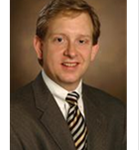ViSE Seminar Series: Sacral Neuromodulation in Children For Bladder and Bowel Dysfunction: preliminary results, SC 5326, Tuesday July 9, 11:50. Lunch provided.
 Title: Sacral Neuromodulation in Children For Bladder and Bowel Dysfunction: Preliminary results
Title: Sacral Neuromodulation in Children For Bladder and Bowel Dysfunction: Preliminary results
Speaker: Dr. John C. Pope, IV, MD, Professor of Urologic Surgery; Pediatrics, VUMC
Date: ****TUESDAY****, July 9, 2013
Time: 11:50am social, noon start
Place: Stevenson Center 5326
Project abstract:
Purpose: Sacral neuromodulation for refractory urinary dysfunction in pediatrics has shown promising results. We prospectively evaluated patients undergoing sacral neuromodulation using validated quality of life (QOL) and bladder dysfunction questionnaires.
Materials and Methods: All patients were prospectively enrolled. Two validated questionnaires were completed pre-operatively, post-lead placement, and all follow-ups. The PedsQLTM 4.0 Generic Core Scale assessed QOL and bladder dysfunction was quantified using the Vancouver Nonneurogenic Lower Urinary Tract Dysfunction (NLUTD) questionnaire. Wilcoxon matched-pairs test were performed and a p-value < .05 was considered significant.
Results: A total of 14 patients were enrolled. Median age was 10 years and median follow-up was 6 months. All patients underwent placement of the generator. No significant difference was seen in physical QOL. Psychosocial QOL pre- and post-lead was 70.6 + 17.4 and 81.43 + 14.8, respectively (p = .02). Total QOL pre and post-lead was 75 + 15.3 and 84.04 + 13.2, respectively (p = .006). Median pre and post-lead NLUTD scores were 23 + 7.8 and 10.5 + 7.0, respectively (p < .001). At one month post-op, a significant difference was seen in both total QOL and NLUTD scores. Two patients required either replacement of the temporary lead or generator. There were no infections.
Conclusion: Patients undergoing sacral neuromodulation had a significant improvement in NLUTD scores and psychosocial and overall total QOL. Results were durable at 1 month. Continuing to follow these patients in a prospective manner with validated questionnaires will strengthen the current evidence supporting sacral neuromodulation in the pediatric population.
